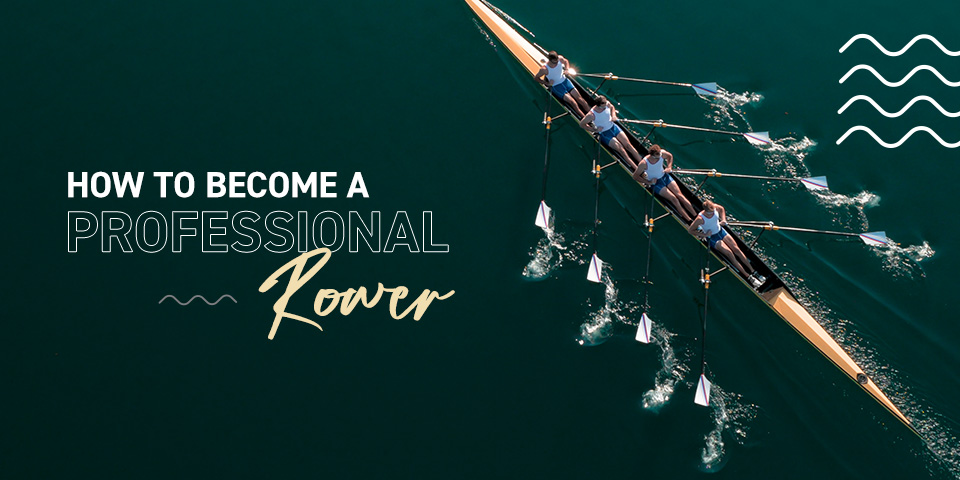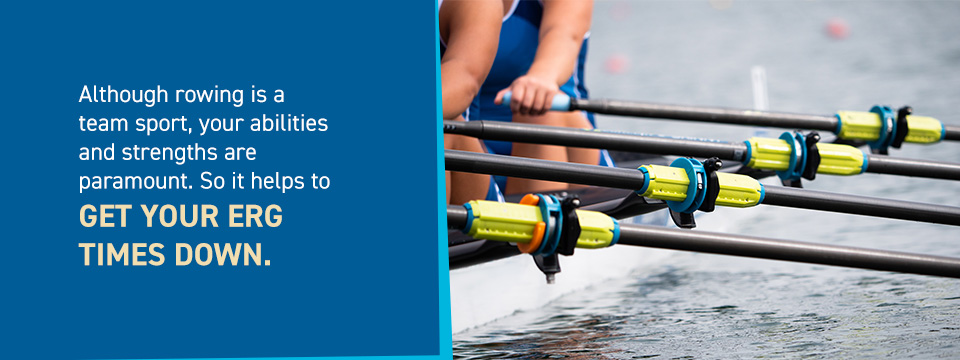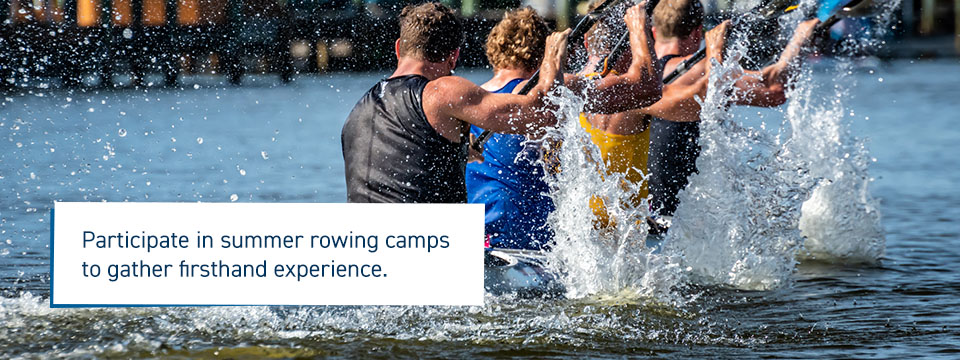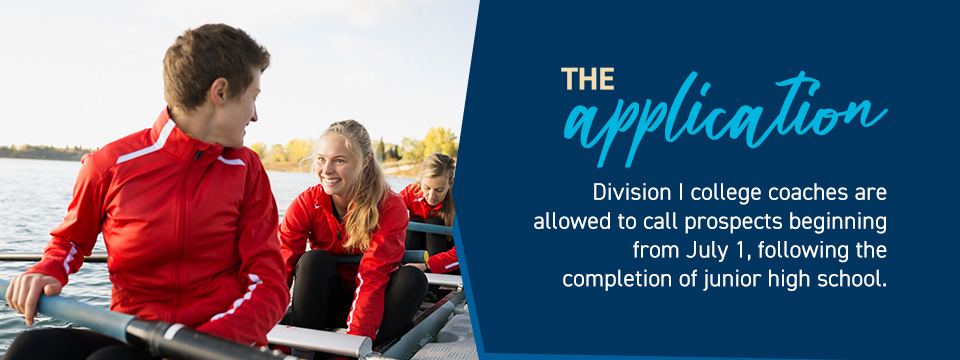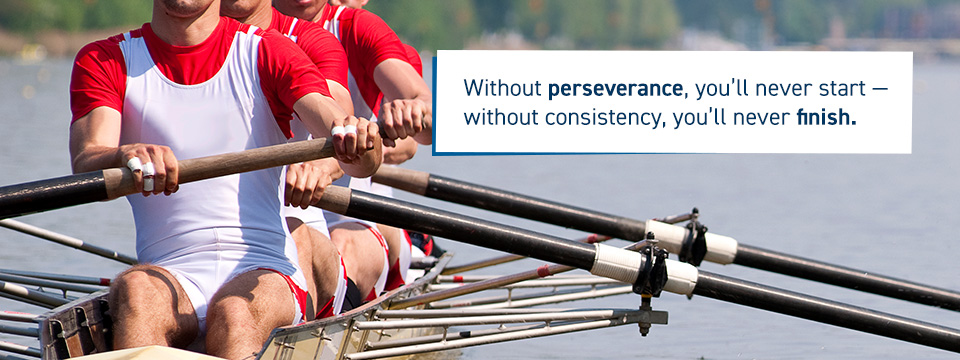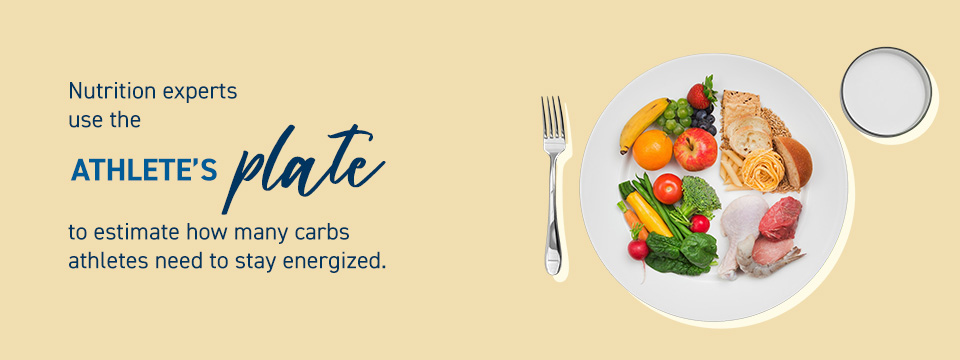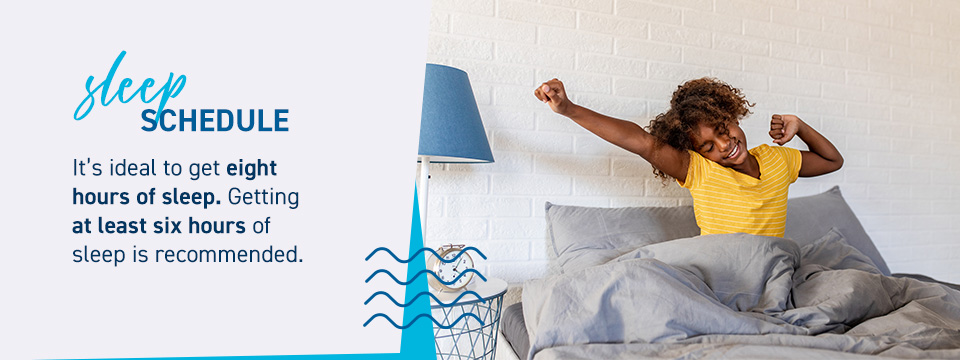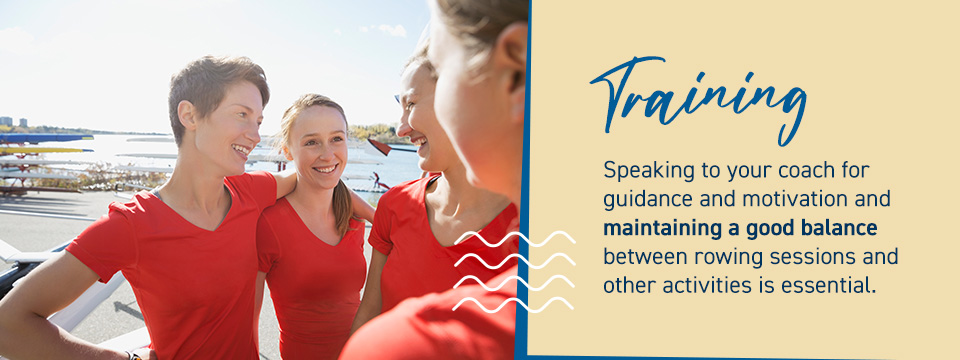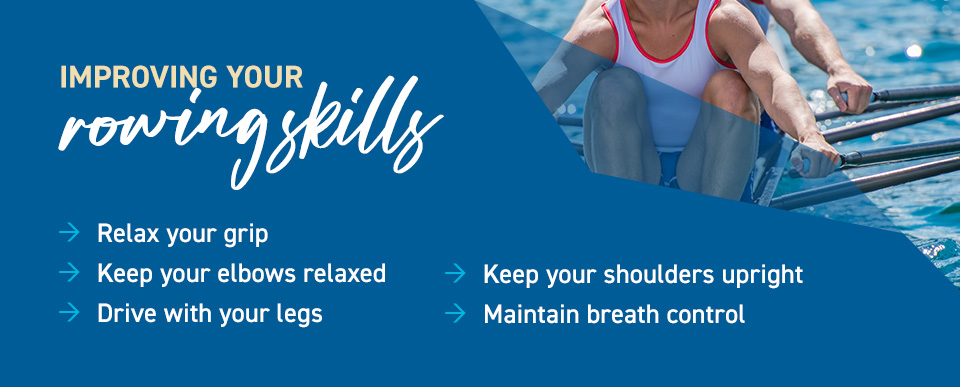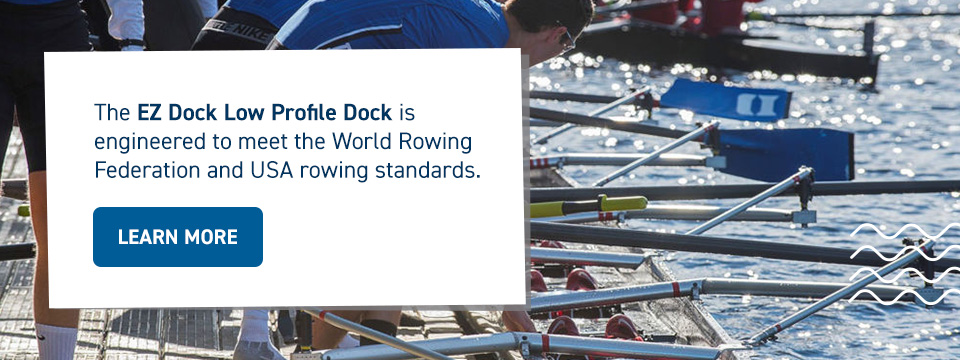Filters
How to Become a Professional Rower
Rowing is one of the most challenging and exciting sports in the world. Besides the intense training sessions and selection procedures, rowers perform in harsh conditions. Thousands of rowing enthusiasts across the country also seek to be part of the sport, making it competitive.
Today, we’ll provide a comprehensive guide to help you through the journey of becoming a professional rower, so strap in!
What Does It Take to Become a Professional Rower?
Becoming a professional rower requires a strong mindset and a disciplined lifestyle. Rowers perform in a highly competitive sport where success requires sacrifice and a formidable mentality. The common traits among those who perform at the top level are dedication, perseverance and pain tolerance. That’s one part of the success story.
The other part requires you to be physically present and ready. The Tim Fosters, Matthew Pinsents and Steve Redgraves of the day share similar qualities regarding diet, workouts, training and sleep schedules. Despite all the hurdles, the best would agree that passion makes hard work stimulating.
Before we talk about the mentality and physical preparation tips, let’s examine how you can journey to the top through college.
Guide For College Rowers and Parents
The best colleges in the country recruit the brightest minds, but that’s not all. Another essential consideration to help secure your spot is sports. The excellent news is collegiate rowing is available even at the high school level. Learning rowing and being good at it gives you an edge to gain admission to the best colleges, including the Ivy Leagues.
Colleges across the country are taking advantage of rowing to rise through the ranks. Look at Hobart College — Geneva, New York’s Division III liberal arts school, which has emerged as a top Intercollegiate Rowing Association (IRA) National Championship competitor, even sending crews to English Henley!
Competitive Division I programs actively recruit junior rowers if they meet the minimum academic requirements. Division II and III programs recruit top junior rowers to remain competitive in Olympic sports. Besides increasing your chances of getting into a good college, participating in sports helps with your fitness, competitiveness and teamwork. Rowers are generally known for their discipline, perseverance, rapt attention to detail and time management.
But what does the college recruiting process look like? What do you need to do to get in? The following steps should guide you:
1. The Decision
Evaluate your college rowing ambitions. Many people find the sport a hobby, which is perfectly fine. But being part of a college rowing team is an engaging task. That’s where the real sacrifice begins. Ask for your coach’s opinion and guidance. They have worked with you for a couple of years and have insight into your physical and mental capabilities. Although rowing is a team sport, your abilities and strengths are paramount. So it helps to get your erg times down.
2k erg times are accurate and dependable to gauge upside, potential and ability. Although erg times don’t always transfer into boat speed on the water, improving the technique contributes to your performance. Coaches prefer to have the best-combined performer on their team because such athletes are likely to succeed. According to the NCSA, the 2k times for recruiting women are:
- Tier 4: Lower division 3 and top club teams — under 7:55
- Tier 3: Division 2, middle division 3 and lower division 1 teams — 7:30s to 7:50
- Tier 2: Top division 3 teams — mid-7:20s to 7:30s
- Tier 1: Top division 1 teams — low 7:20s and under
For men’s heavyweight rowing recruitment, note the following 2k times:
- Tier 4: Varsity and top club programs — 6:30s to 6:40s
- Tier 3: Competitive varsity programs with IRA National Championship Regatta potential — mid 6:20s to 6:40
- Tier 2: Solid varsity programs with consistent IRA National Championship Regatta qualification — 6:10s to mid 6:20s
- Tier 1: Elite varsity programs with IRA National Championship V8+ finals potential — 6:10s and under
For men’s lightweight rowing recruitment, note the following 2k times:
- Tier 2: Elite varsity lightweight programs with 8+ IRA National Championship potential — 6:40s and under
- Tier 1: Regular lightweight 8+ programs — 6:30s and under
It’s also important to up your game so far as your grades and SAT scores are concerned. Remember, although rowing may increase your chances of getting into college, it’s not the sole determining factor.
2. The Selection
After deciding to pursue collegiate rowing, create a list of the schools offering rowing as a sports curriculum. Searching rower’s almanacs and college recruiting websites such as Row2k and the National Collegiate Scouting Association’s (NSCA) rowing directory is a good starting point. Dive deeper by examining the race results and crews that participate in regattas. Consider a variety of options and look for scholarship programs.
Regarding your skillset, consider the rowing competition in the school you want to apply to. It may help to pick one where there is less competition and build your way to the top. Research the academic and athletic requirements in each institution. Participate in summer rowing camps to gather firsthand experience.
Examples of the summer camps you can take advantage of are:
- NCSA college rowing camps
- Row2k rowing camps
- Stanford rowing camps
- USRowing development camps
Reach out to the coaches in schools where you have serious interests. Introduce yourself and express your interest in joining the team. Remember to make an excellent first impression — you only get one chance. Before you contact the coaches or the school, ensure you have your erg times, grades and other important information ready. Be polite when sending emails. Attach your athletic resume, transcripts and video highlights to impress the trainers.
Finally, ask the right questions and be prepared to answer several. Maintain a relationship with the coaches and update them on your development. You’ll likely get their attention with your recent erg times, improved academic performance and videos demonstrating new techniques you’ve learned.
3. The Application
This is one of the essential stages in the process. You should have a list of preferred schools in mind by this time. These steps should guide you in making a successful application:
- Fill out the recruitment forms early to signal your interest in the program.
- Ask your coach to contact interested programs — referrals are excellent ways to get attention.
- Maintain a positive attitude when speaking with recruiters and at admissions interviews.
- Gather all relevant documentation, from your high school transcript to extracurriculars.
- Take the SAT I or SAT II and arrange for your scores to be reported to your preferred schools.
- Apply early, since the rowing program at the top schools will be competitive.
It’s important to note that each institution offering a rowing program decides to whom they extend offers. However, graduated high seniors have a separate and independent process to determine the student’s academic eligibility when they begin their collegiate rowing career.
The National Collegiate Athletic Association’s (NCAA) Eligibility Center certifies all NCAA Division I and II first-year college students to practice or compete with the rowing team or receive athletics-based scholarships. The body makes the determination based on SAT or ACT results, proof of high school graduation and the grade point average in 16 core courses.
Division I college coaches are allowed to call prospects beginning from July 1, following the completion of junior high school. For Division II, the date is June 15, preceding the prospect’s junior year in high school. Division I coaches can also send letters and email correspondence to candidates commencing September 1 at the beginning of high school junior year. Getting familiar with the rules is essential to help you prepare adequately.
Now, let’s talk about the mindset and lifestyle you need to push yourself to the apex.
The Mindset of Professional Rowers
Start training your mind if you want to make it to the big league. The three most important attributes are dedication, perseverance and pain tolerance. Here’s what you need to know about each:
1. Dedication
It takes more than interest or passion to succeed in any sport. Athletes are dedicated to their course and ready to sacrifice certain pleasures to reach their full potential. They set goals and strive to achieve them regardless of the circumstances. The same is true for professional rowers.
Rowers spend several hours each day training and practicing their crafts. They remain dedicated to their program even during the holidays, regardless of the weather conditions. They combine multiple well-researched workout routines which helps them perform at the optimum level.
After the intense drills, they invest additional time in helping their bodies recover through massages, yoga, stretches and naps. Professional rowers also live on strict diets before, during and after each workout session. This gives them the nourishment they need to push their bodies to the limit.
2. Perseverance
The skillset and technique elite rowers employ result from tenacity and consistent practice — this can take several months and years. Let’s take a look at the story of the British Olympic medallist and World champion Frances Houghton.
Frances started rowing at the age of 11. When she was 16, she vowed to do everything possible to get to Sydney in 2000. She accomplished her first vow and made a second. This time, Frances’ dream was to be the first British woman to go to five Olympic games in rowing and win the gold medal. She went to the Olympics five times but never won the gold.
In the hope of achieving her final goal, Frances’ frustration transformed into mental exhaustion and injuries. The injuries culminated in burnout between the 2012 and 2016 Olympics, yet she didn’t give up.
She trained alone and together with her crew towards that goal. They practiced day and night, rain or shine, to help France live her dream. After all, no one else deserved it more than her. Frances had fought her whole life to check off everything she put her mind to. Finally, Frances won another silver medal, but she was thrilled!
Frances found fulfillment in her achievements because she worked hard. She hurdled every challenge in her way and inspired many young women, even though she didn’t win gold. Her story teaches an important life lesson — without perseverance, you’ll never start — without consistency, you’ll never finish.
3. Pain Tolerance
Dedication and perseverance come with pain. Working out several hours a day leaves your body with aches and blisters. Maintaining a strict diet requires discipline and resistance to temptations. Becoming a pro-rower comes with some degree of physical discomfort — rowing is an intense physical activity from start to finish. You need endurance to reach the finish line and win the competition.
For athletes, lactate is a source of fuel. The more they train, the higher their lactate threshold. The intensity of the training increases its production rate. Lactate is the bi-product of anaerobic metabolism. The body uses this process to generate energy during a rowing race — beyond VO2 max. A high lactate level in your blood makes your muscles feel heavy, sore and tired. However, you need to push your body to the limit.
Professional rowers can mentally and physically manage high levels of discomfort to achieve optimum performance. Rowing training sessions prepare you for harsh conditions. The process requires you to take advantage of the motivation your earn from your crew, coaches and psychologists.
The Lifestyle of Professional Rowers
Besides mental fortification, it’s essential to know how elite rowers eat, train and rest. This will help your prepare your body for the competition and increase your chances of succeeding in the sport. Let’s look at them in detail:
1. The Rower’s Diet
Diet is an essential part of the training process of every great athlete. Your diet affects your performance during a race, how your body responds to workout sessions and how well you recover. It also affects your energy levels and mood and protects you against illness.
Rowers need three types of fuel to help them deliver world-class performances. These are proteins, carbohydrates and fats. Each of these nutrients plays a vital role in maximizing your potential. Here’s what you need to know:
- Proteins: Proteins are responsible for repairing and growing muscles. Animal products such as eggs, meat and fish are good sources — vegetarians can take advantage of soy foods and other plant-based proteins such as beans.
- Carbohydrates: Carbs are the primary source of energy for the body. You can obtain different types of carbohydrates from fruits, vegetables, simple carbohydrates and complex carbohydrates, including rice, pasta, bread and potatoes. Nutrition experts use the Athlete’s plate to estimate how many carbs athletes need to stay energized.
- Fats: Our bodies need fats to absorb minerals and vitamins in our foods and provide additional energy for long workouts. The three fats you need in your diet are saturated, unsaturated and trans fats. It’s recommended to consume 25 to 30% of your daily calories from fat.
2. Workout and Training
We cannot stress this enough — rowing is a physical sport. Working out builds you mentally and physically. The average elite rower regularly trains two or three times daily to get in peak shape. The gym sessions are to exercise various muscle groups, including arms, legs, back and cardio.
Strength exercises such as lunges, squats and deadlifts are suitable for the legs, which is key to succeeding in rowing. Do core exercises that focus on the lower back, such as dorsal raises, planks and side planks. Include stretches for your hip flexors and calves. Additionally, lift dumbbells for five or six reps to increase power.
For beginners, improve your stroke rate on the rowing machine. The typical rate is 18 to 30 strokes per minute (SPM). Stick to a low stroke rate between 18 to 24 while perfecting your technique. Focus on consistency rather than speed at first.
Advanced-level rowers require advanced training. Set the damper lever to four or below to maintain a good technique for your workout duration. This helps with resistance training. Increase your stroke rate by focusing on driving or pushing hard with your legs while taking time to recover. After the rowing session, engage in cross-training to build your cardio endurance. This can take about an hour and a quarter. Row on the river with the crew to build coordination and teamwork. Working on strategies is as important as developing your technique.
3. Sleep Schedule
Taking breaks to recover is an integral part of the process. Besides helping with restoration, sleep helps athletes consolidate memories from what they learned in training. It’s ideal to get eight hours of sleep. However, the demands of collegiate academics can make this challenging. Getting at least six hours of sleep is recommended.
Challenges of Rowing for College Students
Learning how to become a professional rower is a journey filled with mental and physical roadblocks in addition to that which comes from being a college student. Let’s take a look at three common challenges rowers in colleges face and how to overcome them:
- Education: Facing academic challenges in college is typical, even for non-rowers. The intense training sessions and numerous meetings may lead to fatigue and take considerable time. Prepare a detailed schedule that makes room for practice and studies, and ensure you stick to it as much as possible.
- Training: The primary challenge students face in college is consistency. Besides going through tough sessions individually or with the crew, practice can also interfere with studies and other social activities. Speaking to your coach for guidance and motivation and maintaining a good balance between rowing sessions and other activities is essential.
- Mental strength: It can be mentally challenging to consistently train and participate in a demanding sport while satisfying your academic needs. While self-motivation is crucial, it’s equally important to remember that rowing is a team sport. Sharing your experiences with people you can trust, such as coaches, professors, crew members, friends and parents, helps.
Rowing is a rewarding sport and remains attractive to thousands of college students in the country. Rowing makes you disciplined, tenacious, fit and intelligent. The challenges we face as rowers only make us stronger. Put in your best and remember to have fun while at it.
Tips for Improving Your Rowing Skills
Whether you’re a beginner or an expert in rowing, there’s always room for improvement. Learning to become a skilled rower may take weeks, months or even years, depending on your access to the right equipment and information and your level of dedication and training. It’s essential to learn the basic techniques and improve upon them. These tips will help you:
1. Relax Your Grip
Gripping too hard can hurt your hands and reduces rowing efficiency. Hold the handle firmly to enable you to drive without losing grip. This makes it easier to pull and release the handle.
2. Keep Your Elbows Relaxed
Keep your elbows at a natural angle and maintain flexibility. Refrain from lifting your elbows at your sides or artificially tacking them in. This helps to prevent injuries.
3. Drive With Your Legs
Leg strength is crucial in rowing. Because your legs are naturally more robust than your arms, they should do most of the work. Exercise your legs to enable you to push harder.
4. Keep Your Shoulders Upright
Shrugging your shoulders causes back pain and reduces the strength of your strokes. Keep your shoulders upright and push your chest out when pulling the handle. Keep your core engaged as you lean back and hinge forward at your waist without curving your spine.
5. Maintain Breath Control
Rushing yourself forward shortens the amount of air in your lungs. Exhale as you drive back and inhale as you recover forward. Maintain a constant rhythm of one count back and two counts forward.
Check Out the Rowing Docks Available From EZ Dock Today!
Building a rowing dock for your rowing club or lakeside home is an excellent addition for anyone from hobbyists to professional rowers. Rowing docks make it easy for the crew to load boats in and out of the water. Rowing docks also help you and your team quickly enter and exit the racing shell.
The EZ Dock Low Profile Dock is engineered to meet the World Rowing Federation and USA rowing standards. Our docks are high quality and require low maintenance, allowing you to focus on getting better at rowing. We also have supplies to help you practice.
Contact us now to learn more about the EZ Dock Low Profile Dock or browse our product line today!

